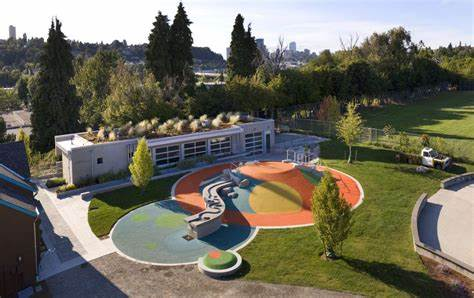Seattle Children’s PlayGarden: A Case Study
Within the vast land of landscape architecture lies many tools for use, such as the Landscape Performance Series. Within this website, one can discover myriad case studies from all over the world covering large topics such as land, water, habitat, carbon, energy & air quality, materials, social, and economic. Everything needed, from budget questions to lot size, is covered within these studies. They are there as a resource to gather both insight and inspiration.
The case study analyzed is the Seattle Children’s PlayGarden, located in Seattle, Washington. With a budget of 1.5 million on a 1.2-acre lot, Winterbottom Design transformed this pre-existing park/open space into an inclusive space that honors the rights of all children to play outdoors. Equipped with handicap-accessible amenities, this PlayGarden allows children from 4-18 to play passively or actively amongst an amazing sensory experience created in collaboration with health professionals. One component of the PlayGarden teaches children the valuable relationship between growing and preparing the food they eat.
As many are aware, there are challenges in every design. So, what did they do?
Challenges:
Inclusivity
Water conservation
Runoff reduction
Promotion of food security
Solutions:
Creation of an interdisciplinary team of medical and design specialists for custom features (e.g., wheelchair-accessible water feature)
Each feature functions to reduce stormwater runoff
The water channel in the play area recirculates to conserve drinking water with a subsurface network of rain catchment basins and pipes channels would-be runoff into an infiltration channel
Water runs off into a garden
Lessons Learned: Phasing the design and construction of the site enabled various sources of funding to be identified and utilized.




